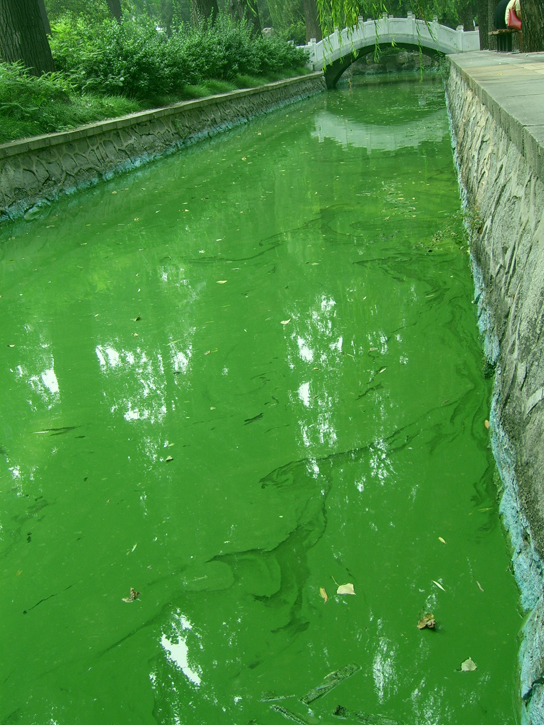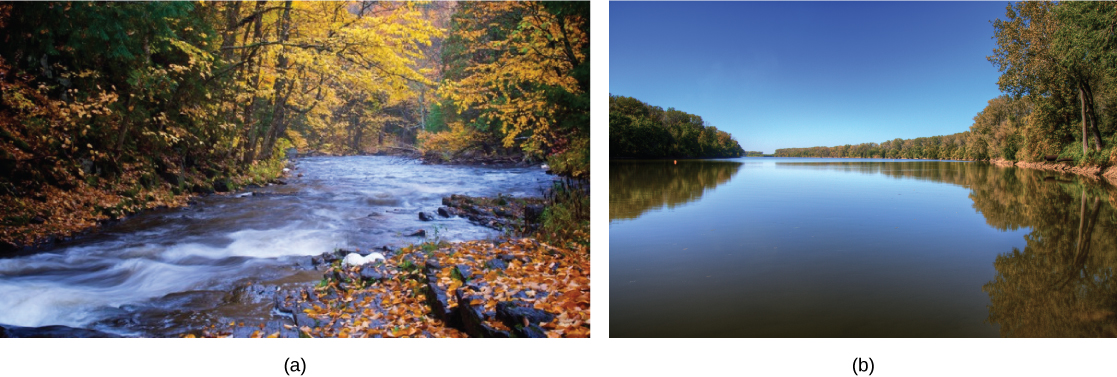| << Chapter < Page | Chapter >> Page > |

Rivers and the narrower streams that feed into the rivers are continuously moving bodies of water that carry water from the source or headwater to the mouth at a lake or ocean. The largest rivers include the Nile River in Africa, the Amazon River in South America, and the Mississippi River in North America ( [link] ).

Abiotic features of rivers and streams vary along the length of the river or stream. Streams begin at a point of origin referred to as source water . The source water is usually cold, low in nutrients, and clear. The channel (the width of the river or stream) is narrower here than at any other place along the length of the river or stream. Headwater streams are of necessity at a higher elevation than the mouth of the river and often originate in regions with steep grades leading to higher flow rates than lower elevation stretches of the river.
Faster-moving water and the short distance from its origin results in minimal silt levels in headwater streams; therefore, the water is clear. Photosynthesis here is mostly attributed to algae that are growing on rocks; the swift current inhibits the growth of phytoplankton. Photosynthesis may be further reduced by tree cover reaching over the narrow stream. This shading also keeps temperatures lower. An additional input of energy can come from leaves or other organic material that falls into a river or stream from the trees and other plants that border the water. When the leaves decompose, the organic material and nutrients in the leaves are returned to the water. The leaves also support a food chain of invertebrates that eat them and are in turn eaten by predatory invertebrates and fish. Plants and animals have adapted to this fast-moving water. For instance, leeches (phylum Annelida) have elongated bodies and suckers on both ends. These suckers attach to the substrate, keeping the leech anchored in place. In temperate regions, freshwater trout species (phylum Chordata) may be an important predator in these fast-moving and colder river and streams.
As the river or stream flows away from the source, the width of the channel gradually widens, the current slows, and the temperature characteristically increases. The increasing width results from the increased volume of water from more and more tributaries. Gradients are typically lower farther along the river, which accounts for the slowing flow. With increasing volume can come increased silt, and as the flow rate slows, the silt may settle, thus increasing the deposition of sediment. Phytoplankton can also be suspended in slow-moving water. Therefore, the water will not be as clear as it is near the source. The water is also warmer as a result of longer exposure to sunlight and the absence of tree cover over wider expanses between banks. Worms (phylum Annelida) and insects (phylum Arthropoda) can be found burrowing into the mud. Predatory vertebrates (phylum Chordata) include waterfowl, frogs, and fishes. In heavily silt-laden rivers, these predators must find food in the murky waters, and, unlike the trout in the clear waters at the source, these vertebrates cannot use vision as their primary sense to find food. Instead, they are more likely to use taste or chemical cues to find prey.

Notification Switch
Would you like to follow the 'Concepts of biology' conversation and receive update notifications?